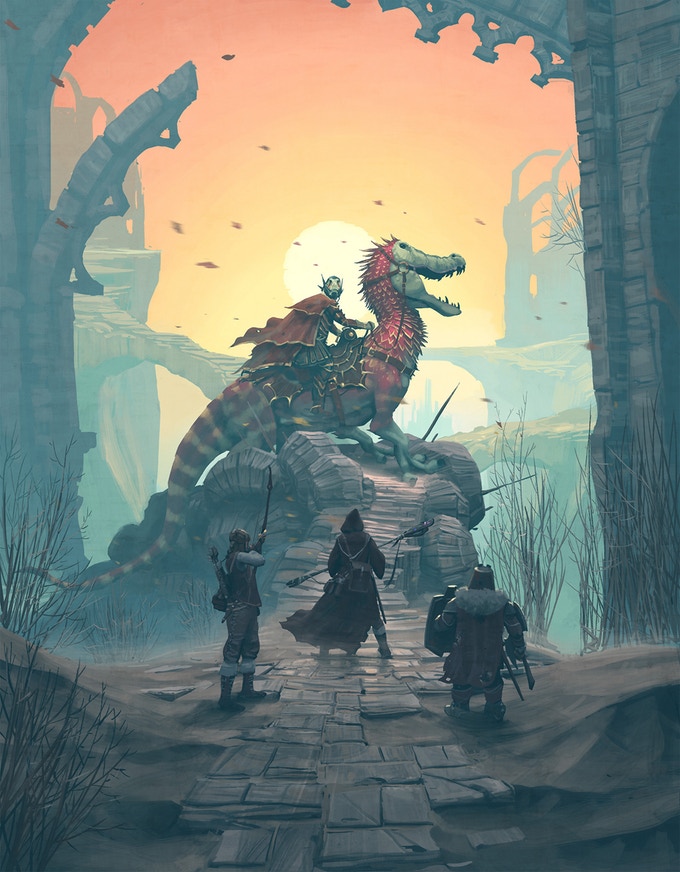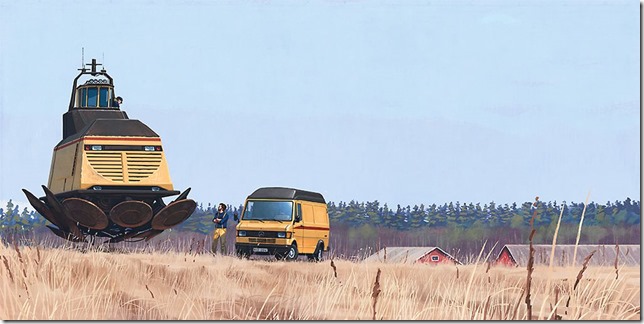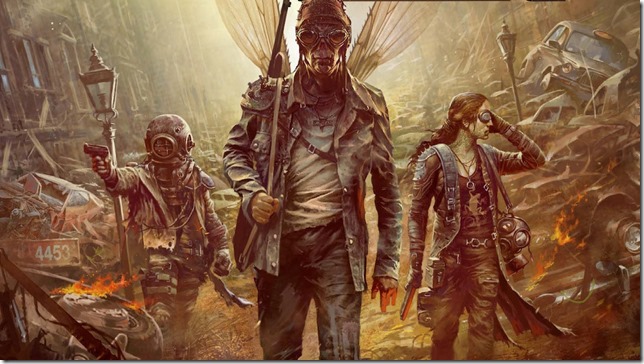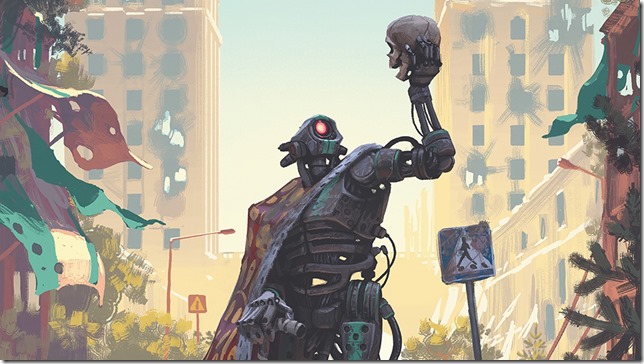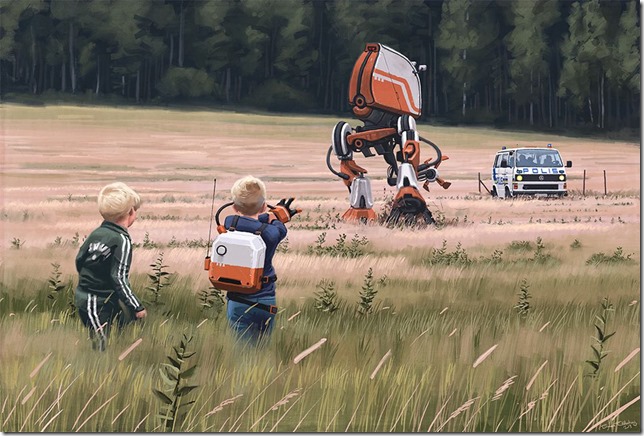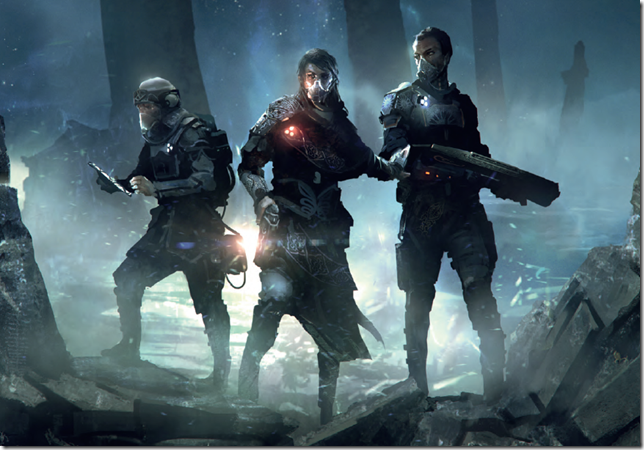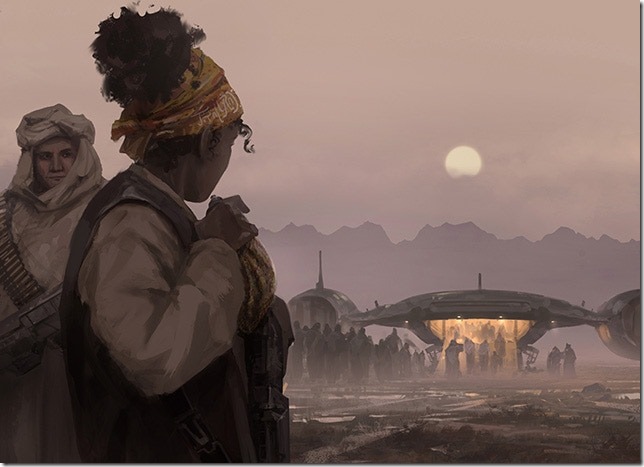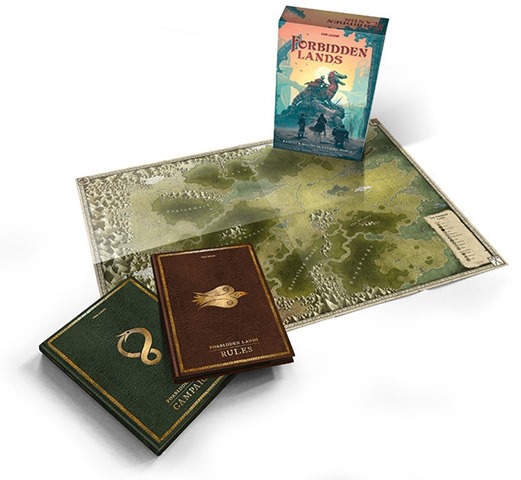Fria Ligan (or Free League Publishing) has quickly become one of my favorite game publishers/design teams. But even though I totally love what they are doing I actually don’t know that much about them, their current and future projects. So I thought it would be cool to do an interview with them. Luckily Tomas Härenstam agreed and without further ado, let’s delve right in.
Stargazer: Thanks again for taking your time to answer some questions. Could you please introduce yourself to our readers. Who are you and what is your position within Fria Ligan (aka Free League)? Can you tell us about how you got introduced to roleplaying games in general and how you came to be working in the RPG industry yourself?
Tomas: Hi and thank you for having me! I’m one of the four founders of Free League Publishing, and these days I tend to manage most of our projects. I’ve been a roleplayer since the mid-80’s, and been writing my own RPGs for almost as long. In the mid-2000s, I self-published an alternate ruleset for the then existing edition of Mutant, and that led to the publisher Järnringen asking me to write the rules for their upcoming title. Later during that project, Järnringen went out of business and they asked me if me if I would like to take it over. That led to me and another couple of hobby writers founding Free League Publishing as a company. The rest is, as they say, history. 🙂
Stargazer: Mutant: Year Zero is probably your most well-known game – at least outside of Sweden. From what I understand the original Mutant was the game that later turned into Mutant Chronicles. Can you tell us a bit more about the history of the game and how it eventually became Mutant: Year Zero?
Tomas: Making Mutant: Year Zero was very special to me as the first edition of Mutant – published in 1984 by Swedish publisher Target Games – was my first ever RPG, and has stayed with me ever since. The first edition was a postapocalyptic game in the Gamma World tradition, but with its own Nordic twist. In the early 90s, Mutant evolved and changed radically – first into a cyperpunk version, then into a space game and finally mutated into Mutant Chronicles. By then, it had really turned into a different game, apart from the name and the brand history. Years later, Järnringen revived the original Mutant with a version that had a steampunk flair to it and was popular in Sweden until it was canceled in 2008 or so. Having started Free League, making another Mutant was a dream for me. With Mutant: Year Zero, we decided to make a prequel to the previous games in the franchise, a game about building a new world among the ruins.
Stargazer: In March you successfully funded Mutant: Mechatron on Kickstarter. The latest game in the Mutant series will be about robots in an underwater facility which develop full conciousness. Can you tell us more about the game and when it will be finally out?
Tomas: Yes! Mutant has always had a mix of human mutants, animal mutants, robots and non-mutant humans. In order to fully go in-depth on each of these classes, we decided to make a stand-alone game about each class, telling the origin story of it and how it came to be in the Mutant universe. The first game, Mutant: Year Zero, focuses on human mutants, Mutant: Genlab Alpha is all about the animals, Mutant: Mechatron tells the story of the robots and the fourth game, Mutant: Elysium, is about the non-mutant humans. The four games are stand-alone but they also tie in to each other, each game expanding the universe and adding a playable class to the game.
In Mutant: Mechatron all players are robots, and that really allows you to go in-depth into what being a thinking, sentient and self-aware machine really means. Will you conform and follow orders, as machines are supposed to? Or will you rebel, and stake our your own path in the dawnworld?
Stargazer: From what I’ve read the next game in the Mutant series after Mechatron will be about humans in the post-apocalyptic world. I assume this project is still a couple of years away (at least when the english-language version is concerned), but could you still share some of your plans concerning Mutant: Elysium?
Tomas: Yes! Mutant: Elysium was released in Swedish in July and is currently being translated. If all goes well, it will be published in English next year. Mutant: Elysium tells the story of the final days of the huge underground enclave Elysium I, where the non-mutant humans have lived for generations to survive the apocalypse on the surface. The players are judicators, a type of police force tasked with maintaining law and order in the enclave. They are about to their hands full…
Stargazer: What makes Mutant special for me is that it’s designed in such a way that you can run it without any preparation at all. You pick a map, roll threats, and off you go. The Ark and the projects the player decide on give the game a focus other games often lack. And the best thing in all that is that you don’t have to rely on the GM’s creativity, the game basically runs itself. Was this one of the initial design goals or something which came as an afterthought? Have you considered adding similar concepts to your other games to make them easier to run?
Tomas: Yes, this philosophy of game design is at the core of what we do and is based on how we ourselves like to play and GM games. We believe that the best stories are created by the GM and players together, not by an almighty GM alone. And it reduces the workload for the GM to boot.
Of our other games, the most similar in this regard is the upcoming fantasy game Forbidden Lands, which is currently on Kickstarter! In Forbidden Lands, we taken the features from Mutant: Year Zero to the next level.
Stargazer: Enough about Mutant, let’s talk about your other games like Coriolis and Tales from the Loop. One of the games everyone’s talking about right now is definitely Tales From The Loop. With its awesome artwork by Simon Stålenhag and its 1980s vibe, it seems to hit a nerve with a lot of gamers. While leafing through the Tales core rule book things often reminded me of the popular Netflix series Stranger Things. Has there been “cross-pollination” between Tales and the TV series or is this just a coincidence? Do you think that the comparison to Stranger Things is more of a boon or bane to Tales From The Loop?
Tomas: I think Stranger Things probably helped Tales from the Loop RPG, but it was a coincidence actually. We published Simon’s Tales from the Loop artbook already back in 2014 and the RPG was already written when Stranger Things aired. But it certainly didn’t hurt the Kickstarter. 🙂
Stargazer: I totally love how Tales is written and laid out, and the setting is familiar but also very strange (which is great). But there’s one thing which sometimes bothers me and I am guess I am not the only one: you have to play kids. I can imagine that playing kids for a while may be fun, but for a longer campaign it might be hard for people in their 40s and probably kids of their own, to keep in character. What is your advice to gamers who are excited by the setting but not the everyone-is-playing-kids premise?
Tomas: I can see that issue, sure. On the other hand, getting into the mindset of a teenager can be alot of fun too! I allows you to draw from your own childhood, memories and stories from your own past. As the game is set in the 80s, that’s particularly useful if you’re in your 40s now, having grown up at that time!
Stargazer: What are your further plans for Tales? Can we expect adventures, or perhaps even new settings (aside from the Swedish and US one)?
Tomas: Yes! We are right now working hard at the first supplement, called Our Friends the Machines & Other Mysteries, containing three full mysteries, a mystery landscape and lots of other cool stuff. We expect to release it before Christmas.
Stargazer: Before having a look at Coriolis, I’d like to talk about the game mechanics which power Mutant, Coriolis and Tales From The Loop. I don’t know if there’s an official name for the “engine”, but let’s refer to it as the Mutant Engine for the lack of a better term. While running and playing Mutant: Year Zero I fell in love with the simple ruleset which still has enough depth to keep even mechanically-inclined gamers excited. Can you tell us about the development of these mechanics? Have you ever thought about releasing a genre-agnostic Mutant Engine book that people can use to run their homebrew games using your mechanics?
Tomas: Yes! Actually, we just passed a stretchgoal in the Forbidden Lands kickstarter which means we will publish and Open Game License for the Year Zero Engine, as we are now calling it. Using this, creators and fans will be able to produce their own content, fully compatible with Forbidden Lands and our other games.
Stargazer: When I first heard about Coriolis I was extremely excited. Your space opera game combines the mechanics from your Mutant game series with an original science fiction setting inspired by Arabian mythology. Because of the inspiration it’s probably no surprise that religion plays a major role in both the setting and the rules. Can you please tell our readers a bit more about the role religion plays in Coriolis?
Tomas: In Coriolis, we wanted to make religion something tangible, something that is a natural part of life for all inhabitants of the Third Horizon. To achieve this, we made prayer a part of the game mechanics. By praying, you can increase your chances to succeed at an action, but at the same time, you submit yourself to the Dark between the Stars.
Stargazer: One criticism of Coriolis that I heard several times was that people don’t want religion in their space opera games. What would you recommend to those critcs? Is Coriolis just not for them, or is there a place for agnostics or atheists in the Coriolis setting?
Tomas: There are non-believers in the Third Horizon, sure, but the strong emphasis on religion and spirituality in a scifi setting is according to me one of the unique features of Coriolis.
Stargazer: While I am very excited about actually playing or running Coriolis (I haven’t had the opportunity yet), I wished you included something akin to Mutant’s Ark and zone exploration mechanics. As a GM with a full day job time is precious and I would prefer to invest more time in playing than preparing. Have you ever thought about add this aspect of Mutant: Year Zero to Coriolis or wouldn’t that fit to your vision of the game?
Tomas: There are some features in Coriolis that are similar to zone exploration in Mutant: Year Zero, but most of them are found in the Atlas Compendium supplement. There, you can find tables for generating missions, events, star systems, planets, and more.
Stargazer: What are Fria Ligan’s plans for the future? Are you working on other games beside Coriolis, Tales From The Loop, and the Mutant series?
Tomas: Right now, we are kickstarting our next big game: Forbidden Lands. It’s a new take on classic fantasy roleplaying, a sandbox survival tabletop RPG with art by Simon Stålenhag and legendary Swedish fantasy artist Nils Gulliksson and lore by fantasy author and game writer Erik Granström. In Forbidden Lands, the player characters aren’t heroes sent on missions dictated by others – instead, they are raiders and rogues bent on making their own mark on a cursed world. They will discover lost tombs, fight terrible monsters, wander the wild lands and, if they live long enough, build their own stronghold to defend. It will be a very cool boxed set with a great big map and legacy stickers, transforming the game map into a document of your unique campaign. You should check it out!
Stargazer: Thanks for agreeing to our little Q&A. It was an honor and I hope we’ll hear again from you, soon.
Tomas: Thank you!

